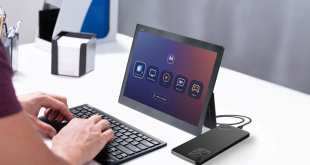Following the news that the new Windows 10 update will be free for a year, Ashley Leonard, president and CEO of Verismic, shares how he thinks this will affect managed service providers.
The latest figures from Netmarketshare suggest usage of the XP platform is dropping. Market share was 18.93 per cent in January 2015, down from 26.29 per cent in April 14.
OS upgrades to Windows 7 will be common in 2015 as customers come to realise support for XP has been stripped away, leaving them adrift.
Windows 8/8.1 has not been popular with all users, which could also prompt those XP and 7 users to actually jump to Windows 10. For a limited time only, one year, Microsoft has also said 10 will be a free upgrade, which makes this upgrade jump even more likely.
In any scenario, a flow of OS upgrades stretches IT resources not just through OS rollout, but through testing, fixing, repackaging and preparing existing applications for the new environment. It really is no small feat deploying applications.
One of our customers in the oil industry has 4,000 devices, which need 150 or so software package rollouts every 12-months. That equates to over 2,400 hours of labour each year. A mad rush from XP to Windows 7 or 8/8.1 to Windows 10 will not make this workload decrease.
Application packaging is expensive for businesses to handle internally too – IT needs a toolset, significant training, plus salaries and benefits for the dedicated packaging team needed to carry out the process. And yes, it does need a dedicated team.
As with all skills, those used on an infrequent basis are forgotten at an accelerated rate. Consider this, if one bad application packaged by an internal part-time packager is deployed to 1,000 machines, it could potentially create 1,000 new problems. You really don’t want that when users are just warming up to their new OS.
The packaging team needs to be sizeable too – it shouldn’t be a ‘one man army’ approach. There needs to be at least four FTEs for safe and successful packaging, with the first being the actual packager, clearly a given. Following the packager is a tester, a critical role that ensures there are no bad packages or conflicts.
Next would be a quality assurance manager responsible for ensuring nothing was missed during testing and the final packaged application meets the requirements set forth during initial discovery of ‘how should this package function’.
Your final member would be the packaging team manager who’s responsible for the team’s creation and ensuring release management process is followed for all packages.
Managed Service Providers (MSPs) are in a great position to provide this support. They can commit resources to creating, testing, preparing and delivering OS rollouts and applications packaged with a high first pass success rate and an improved end-user experience through guaranteed error free packages.
MSPs need to arm themselves with a simple systems management tool – white labelled preferably – and not rely on their customers’ own tools. Pick the right tool and they should be able to benefit from ‘dissolving agent-less’ technology, which means they don’t need to deploy any software at the customer site on any PC to control them – it’s easier and less expense for the MSP.
These will be the MSPs really making a profit from the Windows 10 bonanza.
The chance for businesses to migrate from Windows 7/8.1 to Windows 10 for free is a short 12-month window – no pun intended. MSPs can be up and operational on a cloud, based systems management tool in minutes. Why miss out?
About the author
Ashley Leonard, president and CEO of Verismic.
Further reading
Read PCR’s feature: The rise of managed IT services – how to generate recurring revenues.
 PCR Tech and IT retail, distribution and vendor news
PCR Tech and IT retail, distribution and vendor news


